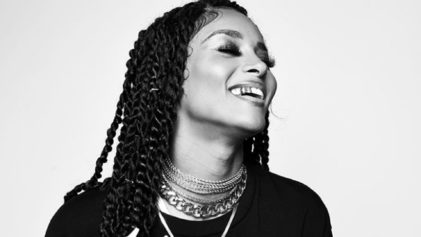You are invited to view the newly acquired Robert Langmuir African American Photo Collection at Emory University and you imagine spending an hour or so in a cool room packed with old photo albums that smell a bit like a musty attic.
But as soon as you walk into the sunny meeting room in the Woodruff Library, stories greet you. No, actually, they swarm you and hug you so tightly you’re left breathless.
The stories tumble from boxes, burst from gilded frames, seep from sheaths of clear plastic, rising, floating and filling the room. Thousands upon thousands of stories, rendered not in words but in images embossed on thin slips of fragile tin, pulpy yellowed card stock and glossy sheets of paper.
They begin their narrative, during photography’s earliest days, with a snapshot of a lynching. From there, sepia-toned picture by sepia-toned picture, they spin a visual yarn documenting more than a century of African American setbacks and achievements. Mostly, they represent moments in the lives of ordinary people such as Edith M. Brown. Hers looks like a respectable graduation portrait. Yet the smile on Brown’s face pulls you in because it’s just about to cross the border into full-on glee.
You can tell her hair was pressed and curled the night before the photo was taken so that her white nurses’ cap would nestle in those fresh waves like a Sunday pillbox hat rather than smother them like a starched, fabric helmet.
The photo dates from July 7, 1949, the day she passed her board exams to become a certified registered nurse in the segregated state of Georgia. Next to it is another picture of her with a young man and a female classmate out for what might have been a night of celebration in her hometown of Columbus. Her official professional license sits next to the photograph. But there is another nursing license, issued to her three years later, this time by the state of New York.
So what is Brown’s story? Did she move to be near family? For professional reasons did she need to be licensed in both states? Or did the segregated laws of the South wind up curbing her professional ambitions and push her North in the tide of the Great Migration?
Black photographers
On its face, this is what the Langmuir collection is, a 12,000-image record of life among working and middle class blacks from the mid-1800s to the early 1960s. But a number of all but the most blatantly racist pictures were taken by African American photographers. There are some notable names in there, photographers such as James Van Der Zee, who chronicled life in Harlem during its renaissance, and Arthur Bedou, a New Orleans artist who was Booker T. Washington’s personal photographer.
But for every Van Der Zee or Bedou, there are hundreds of pictures taken by studio photographers in towns and cities across the country. Their names probably would not ring any bells. And that is what makes the collection remarkable; by virtue of their race and during a time of great social upheaval, those black photographers were able to record everyday moments in the development of a culture either closed to or simply invisible to whites.
“This is like throwing the garage door open to African American life,” said Kevin Young, a curator of literary collections at Emory and National Book Award finalist. “Of course there are photos of Frederick Douglass, Sojouner Truth, Father Divine, Martin Luther King and others in here. But what I love is the dailiness of it. For the most part these are regular folks who fixed up and went to the photographer to have their picture made. Or they just took pictures of themselves in their back yards, or at a night club, or a party, or going to work. It’s not just a little bit about a few famous people. And it’s a transformative collection for Emory because it is comprehensive.”
While it isn’t the largest collection of such photos at an American university, such as Yale or Howard, or institution such as the Library of Congress, it is nonetheless “an extraordinary find,” said Deborah Willis, chair of the photography department at the Tisch School of the Arts at New York University. Willis is a former MacArthur and Guggenheim fellow and editor of several books on African American photographers and images.
“I have worked for the Smithsonian, the Schomberg [Center for Research in Black Culture in New York], and there are photos in the Emory collection that they don’t even have,” said Willis, who was among the first to see the collection once it arrived at Emory last month. “The existence of this archive, with images that we thought didn’t exist anymore or that had been lost to time, it really is amazing .”
By mid-July, the archive will be open to the public through the Manuscript, Archive and Rare Book Library at Emory. None of it can be checked out or copied without approval. But for an hour or more a person can sit in a cool room and shift through a trove of photographs alive with the tales they tell.
“Seeing them all at once like I did — and I really only got to see a little bit of them — it’s like trying to drink out of a fire hydrant,” said Arnika Dawkins, owner and curator of the Arnika Dawkins Gallery in Southwest Atlanta, perhaps the only fine art gallery in town that specializes only in photographs taken by or depicting African Americans. “It was overwhelming. But it also gave me a glimpse into a world I wasn’t around to see.”
White men, black history
How that trove came to Emory is quite the story itself: a friendship between two white men, both antiquarians, who also shared an appreciation for black history and the people who made it.
Years before coming to Emory in 1997 to be the curator of African American Collections, Randall Burkett was at Harvard as an associate director of the W.E.B. DuBois Institute for African American Research. In his off time he collected rare books, so many that the bookshelves in his home groaned with their weight. The circle of serious Northeast collectors like him is tight enough and quirky enough that Burkett eventually bought books from Philadelphia dealer Robert “Bob” Langmuir.
Langmuir, who is in his early 60s, is a shrewd collector, but also a very private one. (In a series of emails he agreed to be interviewed for this story but asked that he be able to respond to emailed questions via conventional snail mail. His answers didn’t make it in time for publication of this story). A few years ago he made headlines when wound up buying a trunk full of ephemera from a long-ago African American carnival outfit that operated in New York City’s Times Square. It turned out that buried in the trunk were some of the early photographs of Diane Arbus, whose pictures of carnival workers and those on the fringes of society are still controversial.
And valuable. Early estimates were that each of the early Arbus images were worth between $20,000 and $60,000. Langmuir had several.
Long story short, a lawsuit involving the African American seller of the trunk ensued, a well received book was written about Langmuir discovering his find, the legal battle, and his own war against crippling depression. According to news reports, the suit was eventually settled out of court.
What’s important about that episode is the fact that Langmuir was in pursuit of the trunk because it promised to bolster the number of African American manuscripts and photographs he had been collecting for 20 years. In the book about his life, “Hubert’s Freaks,” written by another long-time book dealer Gregory Gibson, Langmuir’s upbringing is discussed and it becomes clear what sparked his interest in black life. He grew up near a working and middle class African American neighborhood in Philadelphia. He was also raised in part by an African American woman, hired by Langmuir’s parents to be a nanny for him and his siblings. This was during a time when pop culture images of blacks were at best as entertainers or at worst in subservient or demeaning roles. Langmuir had a different view of black life, one that seemed less exotic than it did ordinary.
The images’ hallmark
Which is in many ways is the hallmark of the images in the collection; their ordinary-ness. There are fashion shots, portraits of servicemen, doctors at work, freed slaves, boxers male and female, school teachers, even Morris Brown College’s earliest baseball team and the headquarters of the Atlanta Daily World newspaper. This is what appealed to Burkett eleven years ago when Langmuir first showed him the collection. Burkett told his friend to call him if he ever wanted to sell it. Last year he did. Under terms of the agreement with Emory, Burkett won’t reveal what the university paid. But he will talk at length about their intrinsic value.
“Because race is so overwhelming, even today, there is still a cultural divide,” Burkett said. “And in many instances, white folks still don’t know who black folks are. These pictures show the rich cultural, social and organizational life of African Americans, where African Americans are representing themselves as they wanted to be seen and how they saw themselves.”
And yet, in the cache there is also memorabilia crafted by whites at the violent close of Reconstruction, images that are curdling in their callous, brutish depiction of blacks. The lynching photo is among them, as is a postcard of a bare-breasted black woman nursing a black child on one breast and a white one on the other. The woman’s eyes avert the camera.
Photos like Edith M. Brown’s nursing portrait are the ballast.
They are what drew NYU’s Willis to Emory to get a preview of the collection, along with Arnika Dawkins, back in June. Willis is currently working on another volume on black photography. She plans to use some of the images in the Langmuir collection.
“I grew up outside Philadelphia and growing up my family always talked about 10th Memorial Baptist Church in Philly where my great-grandmother attended in the 1920s,” Willis said. “They talked about that church all the time but I never saw it. Until I came to Emory. There was a picture in there of that church. So it just emphasizes why we need to collect these images and preserve them. To experience a visual of African American life is a way to tell a story.”
The Robert Langmuir African American Photography Collection at the Manuscript, Archive and Rare Book Library at Emory University.
Summer hours: 9:30 a.m. to 5 p.m., Monday – Friday; 10 a.m. to 4 p.m., Saturdays. Closed on Sundays.
Source: Rosalind Bentley, AJC


